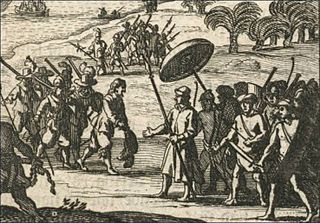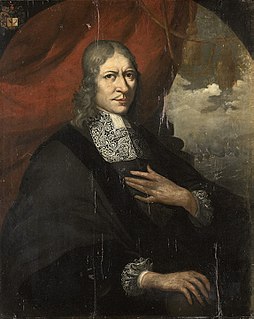
The Dutch colonial empire comprised the overseas territories and trading posts controlled and administered by Dutch chartered companies and subsequently by the Dutch Republic (1581–1795), and by the modern Kingdom of the Netherlands after 1815. It was initially a trade-based system which derived most of its influence from merchant enterprise and from Dutch control of international maritime shipping routes through strategically placed outposts, rather than from expansive territorial ventures. With a few notable exceptions, the majority of the Dutch colonial empire's overseas holdings consisted of coastal forts, factories, and port settlements with varying degrees of incorporation of their hinterlands and surrounding regions. Dutch chartered companies often dictated that their possessions be kept as confined as possible in order to avoid unnecessary expense, and while some such as the Dutch Cape Colony and Dutch East Indies expanded anyway, others remained undeveloped, isolated trading centres dependent on an indigenous host-nation. This reflected the primary purpose of the Dutch colonial empire: commercial exchange as opposed to sovereignty over homogeneous landmasses.

The Battle of Colachel was fought on 10 August 1741 [O.S. 31 July 1741] between the Indian kingdom of Travancore and the Dutch East India Company, during the Travancore-Dutch War. Travancore, under Raja Marthanda Varma, defeated the Dutch East India Company. The defeat of the Dutch by Travancore is considered the earliest example of an organised power from Asia overcoming European military technology and tactics. The Dutch never recovered from the defeat and no longer posed a large colonial threat to India.

Gustaaf Willem, Baron van Imhoff was a Dutch colonial administrator for the Dutch East India Company (VOC). He served as Governor of Ceylon from 1736 to 1740 and as Governor-General of the Dutch East Indies from 1743 until his death in 1750 at Istana Cipanas.

Sebald or Sebalt de Weert was a Dutch captain and vice-admiral of the Dutch East India Company. He is most widely remembered for accurately plotting the Falkland Islands in 1600.

The Dutch Gold Coast or Dutch Guinea, officially Dutch possessions on the Coast of Guinea was a portion of contemporary Ghana that was gradually colonized by the Dutch, beginning in 1598. The colony became the most important Dutch colony in West Africa after Fort Elmina was captured from the Portuguese in 1637, but fell into disarray after the abolition of the slave trade in the early 19th century. On 6 April 1872, the Dutch Gold Coast was, in accordance with the Anglo-Dutch Treaties of 1870–71, ceremonially ceded to the United Kingdom.

The Travancore–Dutch War was a war between the Dutch East India Company (VOC) and the Indian kingdom of Travancore, culminating in the Battle of Colachel in 1741.

Philips Baelde or Father Philippus Baldaeus, was a Dutch minister. He went to Jaffna during the Dutch period in Ceylon with an invading Dutch force. As the second European after Abraham Rogerius he documented the life, language and culture of Tamil people, living in the north of the island. It is a great historical record, and it was immediately published in Dutch and German. English translation was published by Ceylon Government Railway (1960).

The Kingdom of Kandy was an independent monarchy of the island of Sri Lanka, located in the central and eastern portion of the island. It was founded in the late 15th century and endured until the early 19th century.

Rijcklof Volckertsz. van Goens was the Governor of Zeylan and Governor-General of the Dutch East Indies. He was the Governor of Zeylan from 12 May 1660 to 1661, then in 1663 and finally from 19 November 1664 to 1675 during the Dutch period in Ceylon. He was also served as Council Member of India during 1679. Van Goens’ managed to monopolize the cinnamon trade, get hold of the Malabar pepper and drive away the Portuguese from Ceylon and the Coromandel Coast for the VOC.

Hendrick or Henricus Zwaardecroon was Governor-General of the Dutch East Indies from 1718 until 1725.

Gerard Pietersz. Hulft, was a Dutch general. In 1655 he was sent with a fleet to Ceylon and died in action.

Dutch Malabar, also known by the name of its main settlement Cochin, was the title of a commandment of the Dutch East India Company on the Malabar Coast between 1661 and 1795, and is part of what is today collectively referred to as Dutch India. Dutch presence in the region started with the capture of Portuguese Quilon, and ended with the occupation of Malabar by the British in 1795. They possessed military outposts in 11 locations: Alleppey, Ayacotta, Chendamangalam, Pappinivattom, Ponnani, Pallipuram, Cranganore, Chetwai, Cannanore, Cochin, and Quilon.

The Invasion of Ceylon was a military campaign fought as a series of amphibious operations between the summer of 1795 and spring of 1796 between the garrison of the Batavian colonies on the Indian Ocean island of Ceylon and a British invasion force sent from British India. The Dutch Republic had been a British ally during the French Revolutionary Wars, but was overrun by the French Republic in the winter of 1794 and reformed into the client state of the Batavian Republic. The British government, working with the exiled Stadtholder William of Orange, ordered the seizure of Batavian assets including colonies of the former Dutch Empire. Among the first territories to be attacked were those on the coast of the island of Ceylon, with operations initially focused on the trading port at Trincomalee.
The Dutch–Ahanta War was a conflict between the Netherlands and the Ahanta between 1837 and 1839. Beginning with a mere economic dispute between the Ahanta and the Dutch, who were based at the Dutch Gold Coast, the conflict ended with the hanging of Ahanta king Badu Bonsu II and the reorganization of the Ahanta state, establishing a Dutch protectorate over the Ahanta.

Willem Jacobszoon Coster was the Governor of Zeylan during the Dutch period in Ceylon. He was appointed on 13 March 1640 and was Governor until 1 August 1640. He was succeeded by Jan Thyszoon Payart.
Lubbert Jan baron van Eck was the 31st Governor of Ceylon during the Dutch period in Ceylon.

Iman Willem Falck was the 32nd Governor of Zeylan during the Dutch period in Ceylon. He was appointed on 7 August 1765 and was Governor until 5 February 1785. He was succeeded by Edward Hughes.
Adriaen Adriaensz Roothaes was a Dutch captain, Commander of Galle, Ceylon, and acting Governor of Dutch Ceylon from November 1664 to April 1665.














